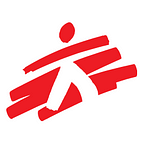One step at a time: Improving treatment options for children with drug-resistant TB in Tajikistan
Dr Zulfiya Dustmatova works as a medical doctor with MSF in Tajikistan, where our teams work with the Ministry of Health and Social Protection to diagnose and treat children with drug-resistant TB (DR-TB).
MSF first began treating children with drug resistant TB in Tajikistan in 2012. At that time, we didn’t have paediatric formulations of the medicines, so we had to split the tablets meant for adults, sometimes in half, sometimes in larger bits. We were concerned about the effect of giving children higher or lower doses of the medicines through this makeshift and inexact method. But we had no choice.
The children had to take around five to six medicines every day along with very painful daily injections for several months. The side effects of these medicines were often unbearable. I remember a girl, 14 years old, who hid her medicines because of her fear of the side effects. Her condition deteriorated, and eventually she died. Other children suffered from hallucinations and deafness brought on by the toxicity of the drugs. Parents often refused to enrol their children on treatment to avoid them suffering the side effects.
Our approach from the start was to embrace a comprehensive approach to treatment for children. This approach focusses on community-based care wherein children are looked after and treated at home as much as possible, and can therefore benefit from the support of their family and trained nurses working in the community. This helps children keep up with the long and challenging treatment.
In 2014, we were able to start using a few TB medicines in syrup form. This made it easier to treat younger children who often have difficulties swallowing pills, and it also meant we could achieve accurate dosing. However, not all the required medicines were available as a syrup, and those that were available did not have a long shelf life and needed refrigeration. Not all patients’ homes had refrigerators to keep these syrups at the right temperature. But it was still an improvement on the options we had when we first started treatment for children.
After feasibility studies had been conducted, we first prescribed bedaquiline for a child at the end of 2015, using the crushed adult tablets of the medicines. Then delamanid followed in 2016. Both these drugs meant that eventually we could stop using injections to treat children — it was a huge relief to be able to end the horribly painful daily injections of medicines.
The development of TB medicines in paediatric formulation in dispersible form marks the latest attempt to improve treatment for children. The advantages are that the tablets can be dissolved in a small amount of water — several medicines in a single cup if needed — and that they are tasteless compared to the often bitter syrups. There are also no storage challenges or need for refrigeration.
Today, in Tajikistan, we have about four or five medicines available in this form, and they have made treatment much easier and more child-friendly. Around half of the medication children take daily now is in dispersible form.
And for the future? While we welcome any further improvements in TB medicines for children, we must also continue to focus on meeting the challenges that lie with finding children with the disease in the first place. In our project we detected more than 50% of treated children through contact tracing. Without it, it will remain very difficult to get on top of this disease that continues to claim many young lives unnecessarily.
Stay connected with our work to open up fair access to medicines for all — sign up to get our updates here on Medium and through our newsletter.
